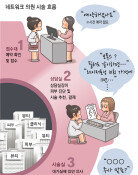The growing shortage of crematoriums sparks concerns
The growing shortage of crematoriums sparks concerns
Posted February. 28, 2024 07:38,
Updated February. 28, 2024 07:38
Mr. Kim, who recently visited a crematorium in Incheon, was confounded at the sight of the cremation chamber door closing even before the bereaved families gathered in the observation room after handing over the coffin where the deceased was laid. One bereaved family sank to the ground with regret and disappointment for not being able to witness the final moments of her loved one. After taking over the burial urn two hours later, the bereaved families hurried to the cemetery, as other deceased ones were awaiting their turn for cremation.
The gradual decline in the availability of crematoriums is depriving bereaved families of the opportunity to bid a proper farewell to their loved ones. According to the Ministry of Health and Welfare, the total number of deceased individuals who were cremated in 2022 amounted to 342,128, marking an increase of 82,781 cases (31.9%) compared to 2018. However, the growth in cremators nationwide over the same period was minimal. The count rose by only 35, inching up from 347 to 382, largely attributed to the fierce opposition faced by local governments when attempting to expand cremators. Residents’ strong resistance resulted in a mere two additional crematoriums, bringing the total from 60 to 62.
The ”crematorium precipice,” where grieving families struggle to find a cremation facility for their loved ones, is only six years away. Currently, Korea has the capacity to cremate 346,680 deceased individuals annually. However, considering the projected funeral trends with 90% opting for cremation in line with the expected number of people to die, the estimated number of people demanding cremation services by 2030 is 369,000. This implies that every day, 61 bodies will be left without a crematorium. The Ministry of Health and Welfare stated that there are no plans to construct new crematoriums nationwide before 2028.
주현우 기자 woojoo@donga.com
Headline News
- Pres. Yoon addresses the nation at a press conference
- LX Group chairman gifts 100 million won to employee family welcoming quadruplets
- Tax-exempt shared offices in rural areas misused as tax havens
- President-Elect Trump promises 'peace through strength'
- French gambler wins 67.2 billion won by betting on Trump’s election win







